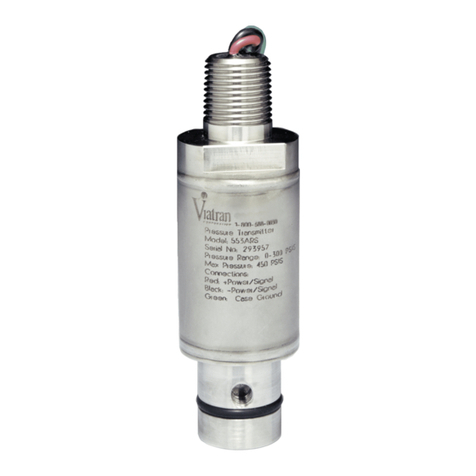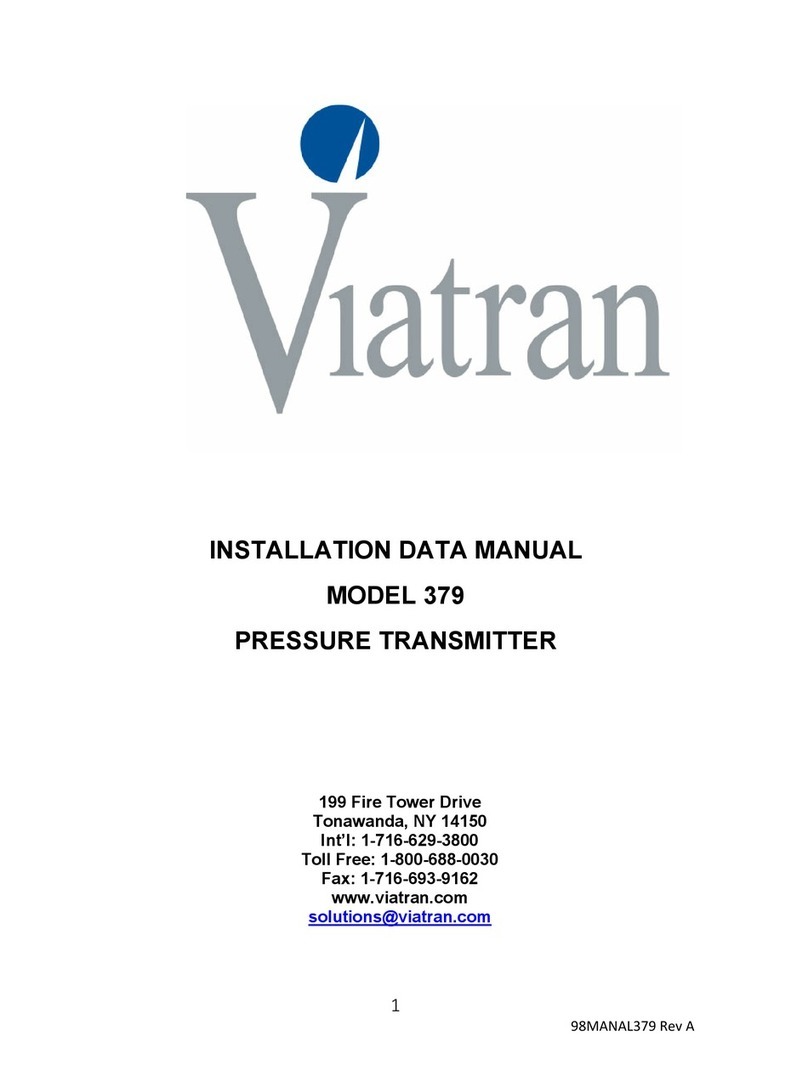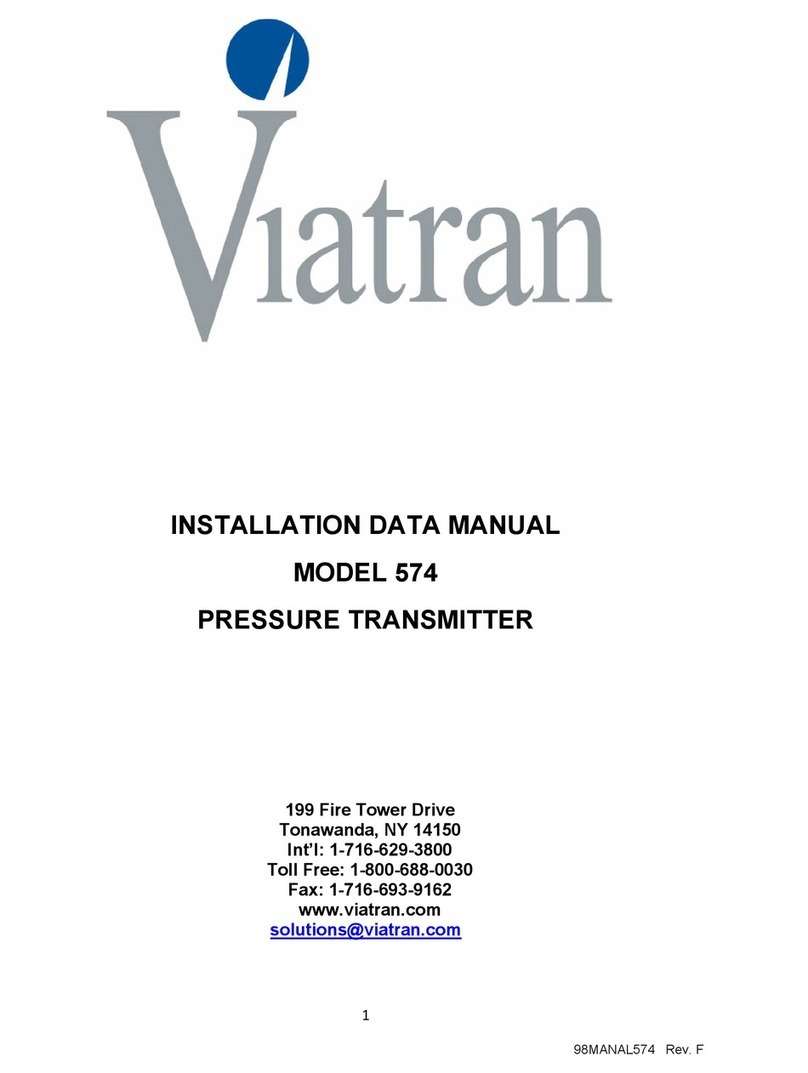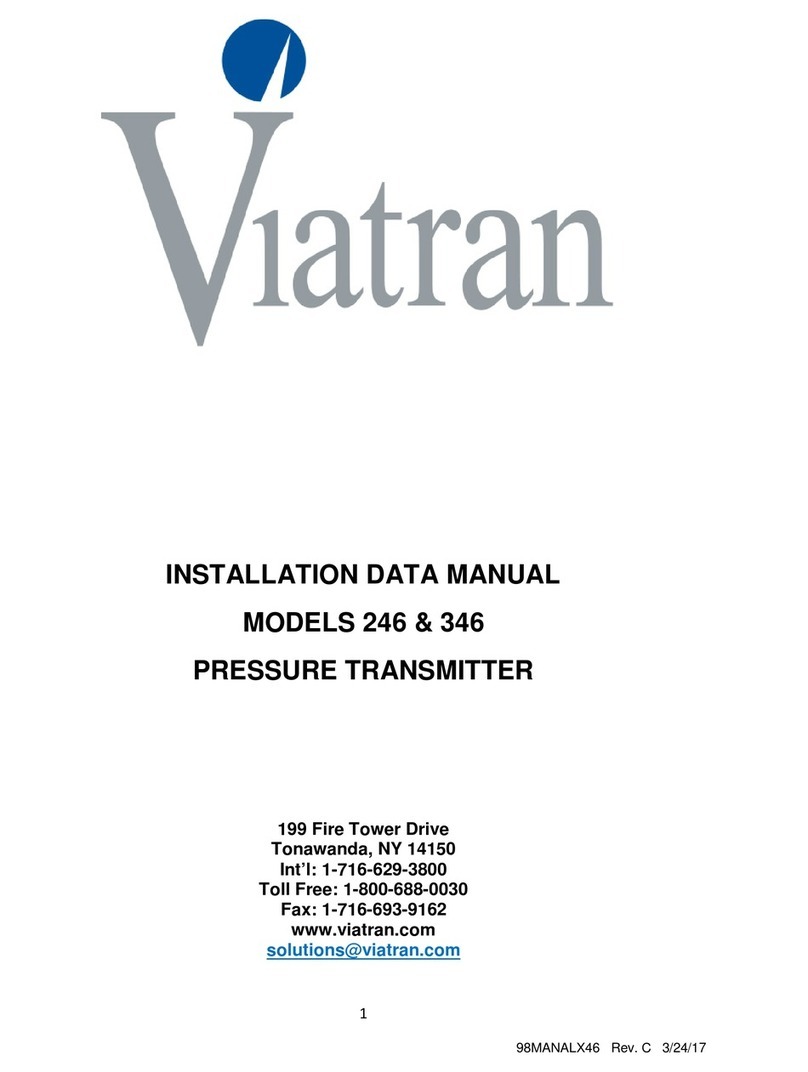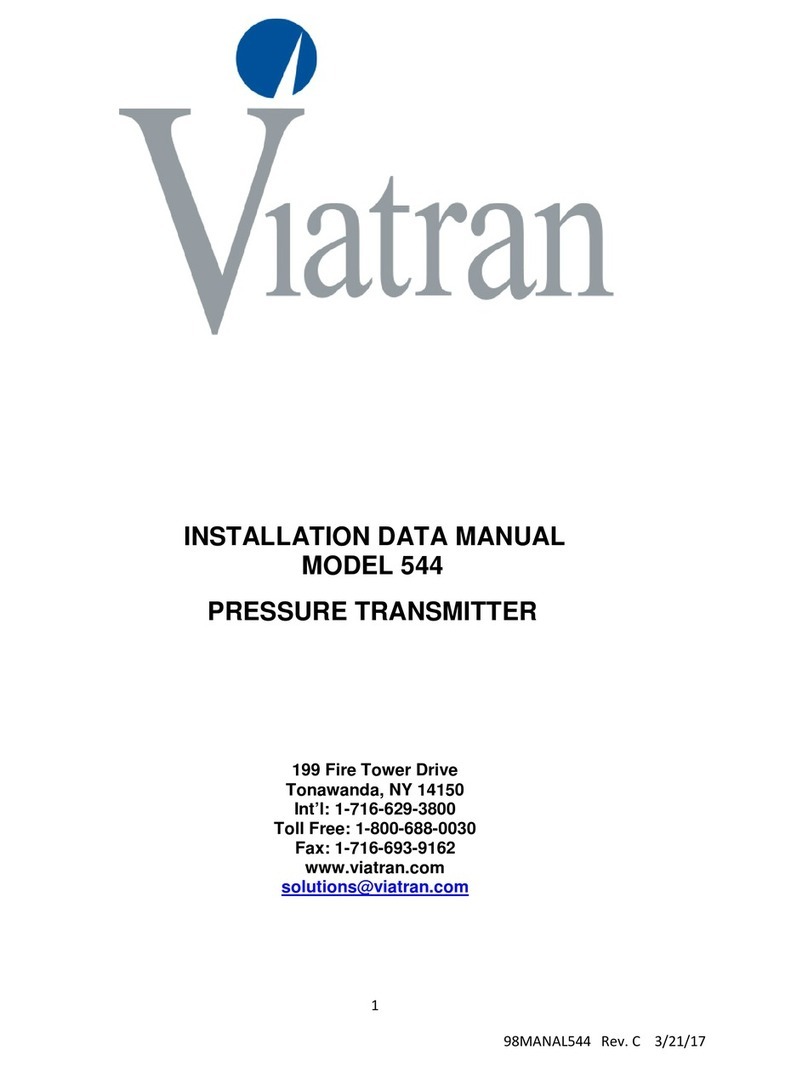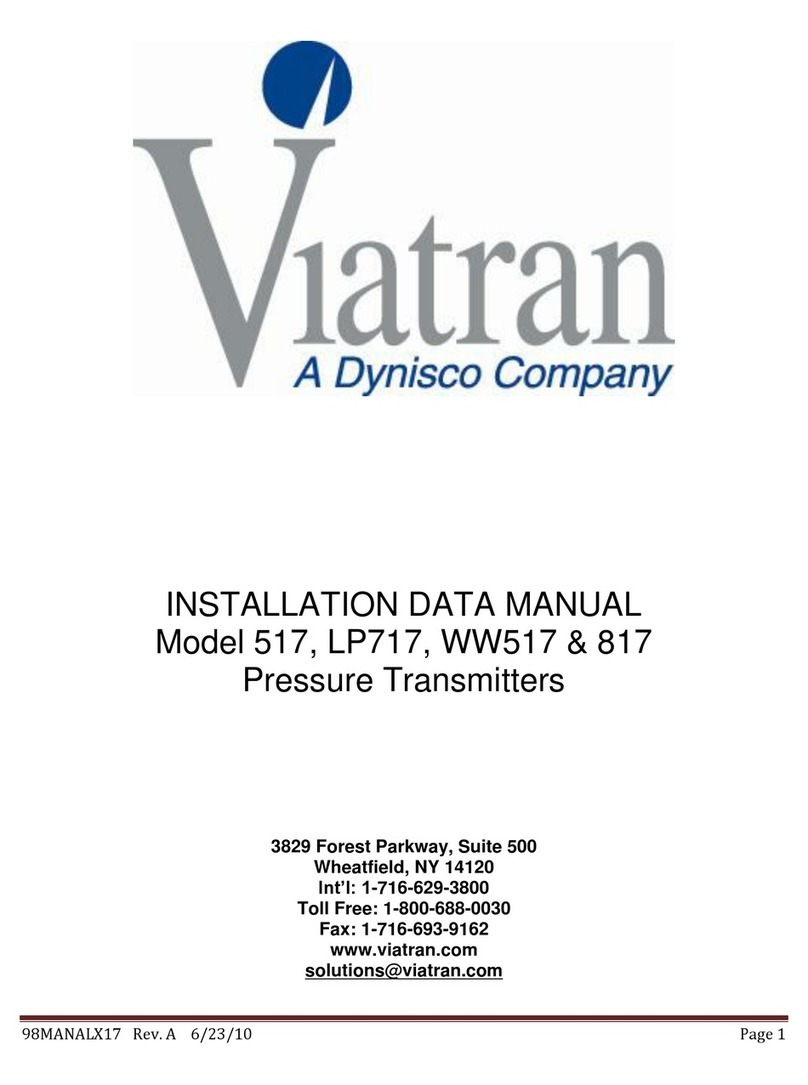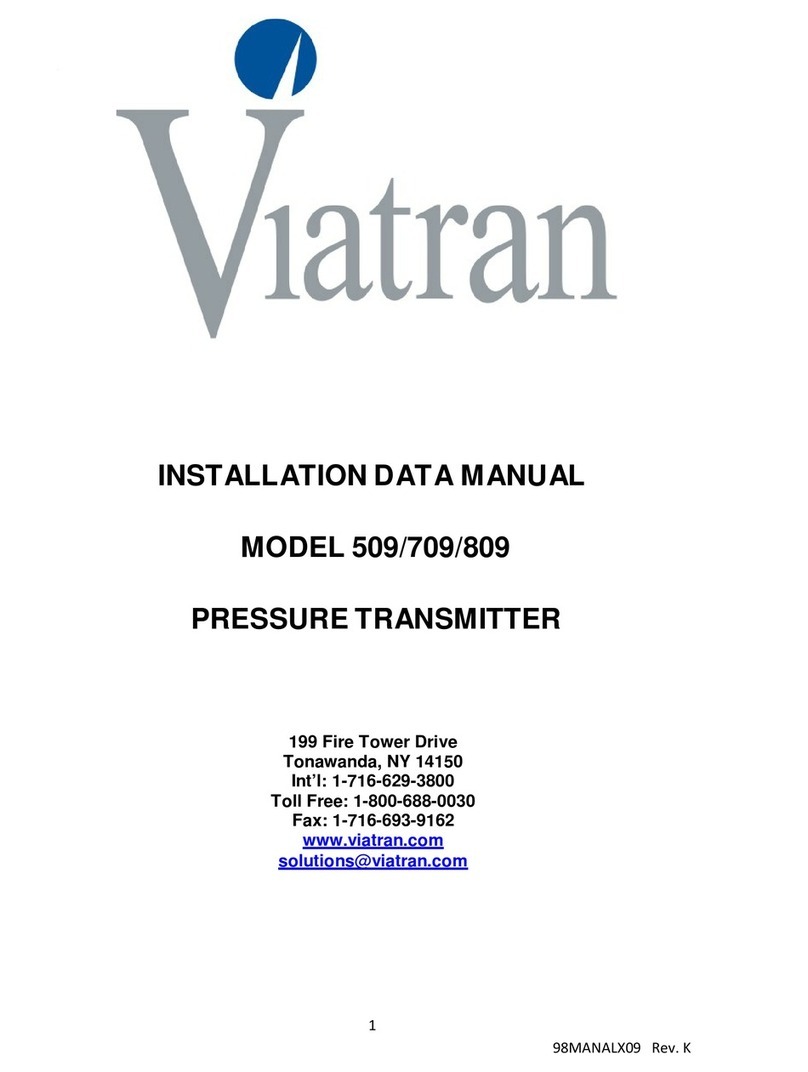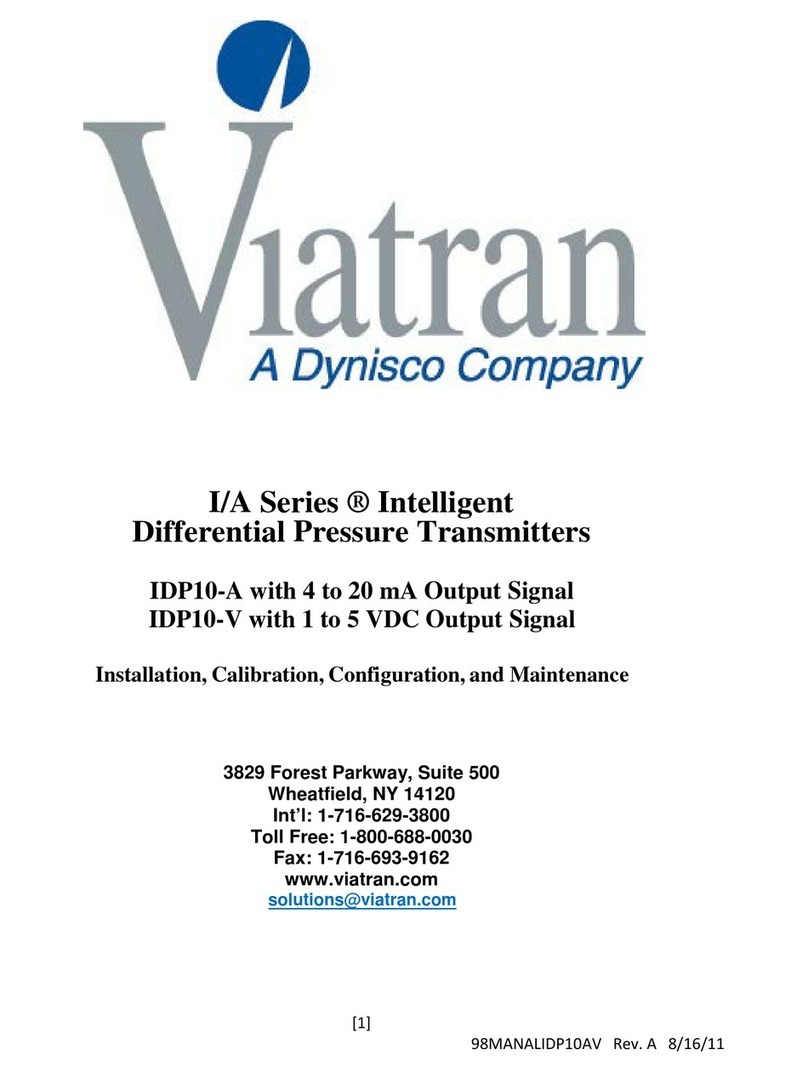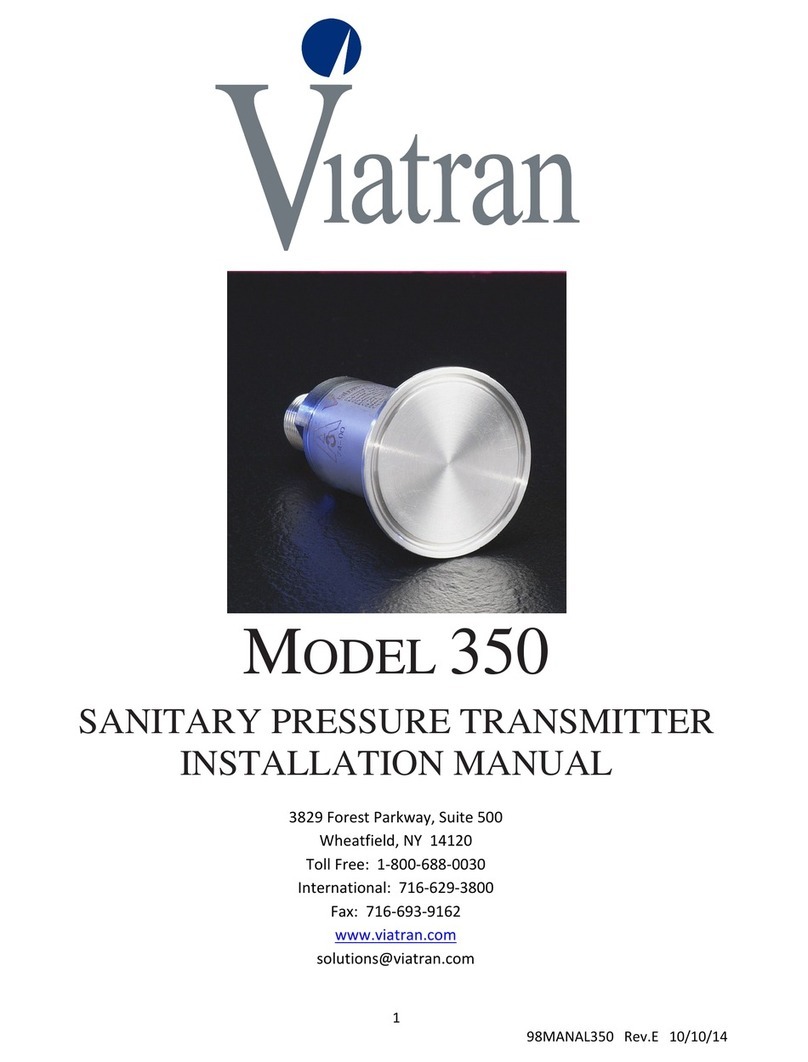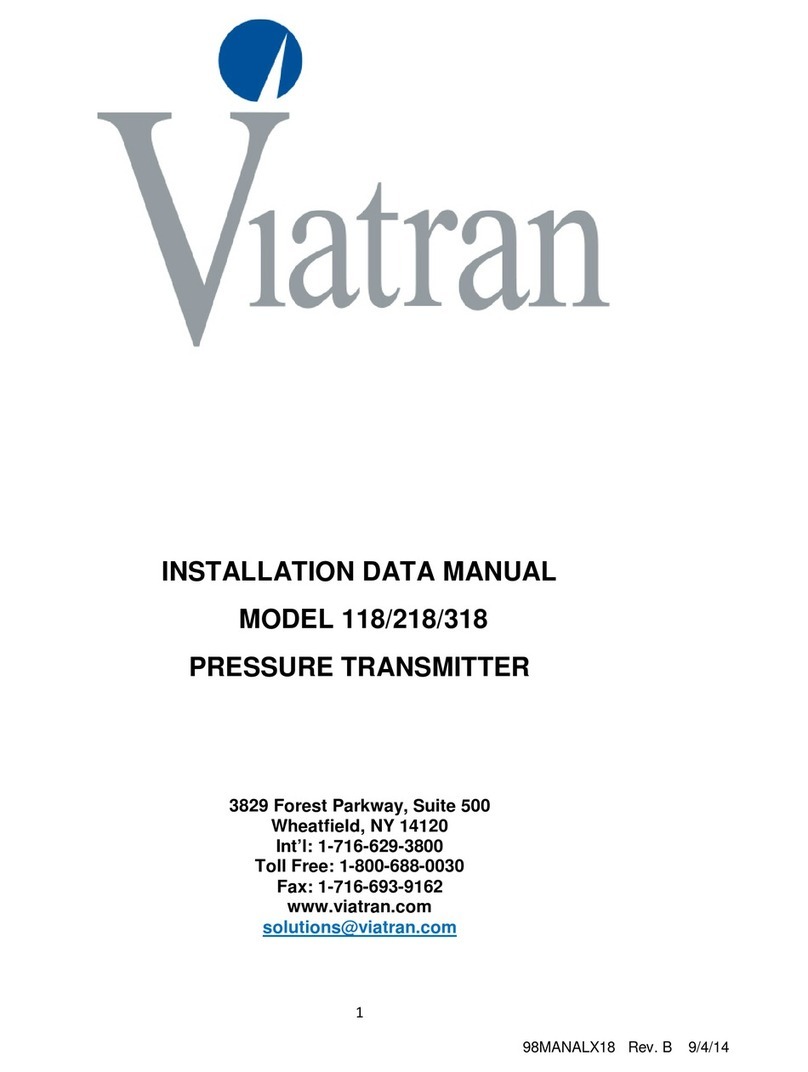
3
98MANAL359 Rev. F3/21/17
INSTALLATION REQUIREMENTS & CAUTIONS
1. The Model 359 is shipped from the factory with a protective cover over the sensing diaphragm. Care must be taken at all times to prevent
the diaphragm from becoming damaged or ruptured.
2. The Model 359 is shipped with a silicone (FDA Approved) O-Ring that provides a seal to the tank receiver or adapter. Care should be taken to
ensure the O-Ring is seated properly. If it is not, product will leak out of the breather passageway. A part number for a spare O-Ring is listed
in the accessories section of this Installation Manual.
3. The threaded tank shell-retaining nut, optionally available from Viatran, secures the transmitter into the tank receiver or adapter. It is
recommended that this nut be hand tightened to provide the required force to seat the O-Ring. An optional wrench is available for this nut if
solidified product prevents the nut from being loosened by hand. When the transmitter is removed from the receiver or adapter, the O-Ring
should be removed, inspected and cleaned or replaced if necessary.
4. It is important that breather passageways be kept clear of solidified product. If these holes become blocked, the transmitter output will be
erratic due to changes in barometric pressure. A probe, such as a pipe cleaner, may be used to clear the reference vent holes. If the
problem persists, soak the unit in Isopropyl Alcohol to dissolve any blockage.
5. If the transmitter must be removed for an extended period of time, a dummy plug is optionally available to seal the tank so tank or system
can be put back in service. Like the Model 359, the plug is secured into the tank receiver or adapter by the retaining nut and sealed by the O-
Ring. For the appropriate length plug, please contact one of our Application Engineers.
6. This product cannot be used in sterilization systems as described in the 3A Sanitary Standard 74 – XX (latest rev), Sections E1.9.
7. During product installation, the customer shall verify that all o-rings, gaskets, or seals meet or exceed the requirements of the 3A Sanitary
Standard 74 - XX (latest rev).
8. This product utilizes a sensing diaphragm that is “corrugated” or “grooved”, and shall be mounted at a minimum of 10 degrees to meet the
intent of 3A Sanitary Standard 74 – XX (latest rev), for self draining when installed in a process tank or piping by the customer.
9. The mounting for the Model 359 Tank Spud, shall have the “flats” of the shell aligned so as to allow for leak detection of the tank mounting.
10. This product utilizes a fill fluid, DC-200 (CAS# 63148-62-9), and has been determined to be non-toxic.
11. Adapters for Model 359, in general, are not 3A approved. Customer must ensure that the installation meets the requirements of 3A
Sanitary Standard 74 – XX (latest rev) for both leak detection and self draining when installed in a process tank or piping by the customer.
BASIC OPERATION & INTERNAL CALIBRATION CIRCUIT
Note:
The casting of the module has raised numbers at the adjustment screw positions. Those numbers reflect the following function of the
assigned screw.
Screw 1: Top Left, Coarse Zero Pot (CCW - Lower, CW - Raise)
Screw 2: Top Right, Fine Zero Pot (CCW - Lower, CW - Raise)
Screw 3: Lower Left, Internal Cal. Activation Pot (12 or 6 o’clock position – Disengage; 3 o’clock position - Engage)
Screw 4: Lower Right, Span Adjustment Pot (CCW - Lower, CW - Raise)
1. Outside of using the calibration circuit or the availability of a metrology lab for obtaining a pressure (Full Scale) reading, no object should be
used to physically move the sensor. The diaphragm can easily be ruptured by a fingernail.
2. Once proper connections and power are applied, the unit should begin to function.
3. Check the zero (4.00 mA) with the performance certificate to verify condition. If it is out of specification from the performance certificate,
use the coarse and fine zero adjustment screws to obtain the proper reading.
4. With no pressure applied, engage the calibration circuit by slowly rotating the calibration screw until the current output rises to about 8.80
mA’s (for a standard calibrated range). Check the reading with the performance certificate. If the reading is off, adjust the span screw to
raise or lower the reading – return the calibration circuit to the original position.
5. When making zero and/or span adjustments, there may be some interaction between the zero and span readings - repeat adjustments if
needed.
6. Always return the calibration screw to off or full CCW position before installing the transmitter into the application. Note: This is a common
reason for incorrect readings at start-up. The calibration circuit must be deactivated in order for the product to perform properly.
7. Once the product has been tested and functionality verified, the power and meter connections may be removed and the product reconnected
to the instrumentation loop.

